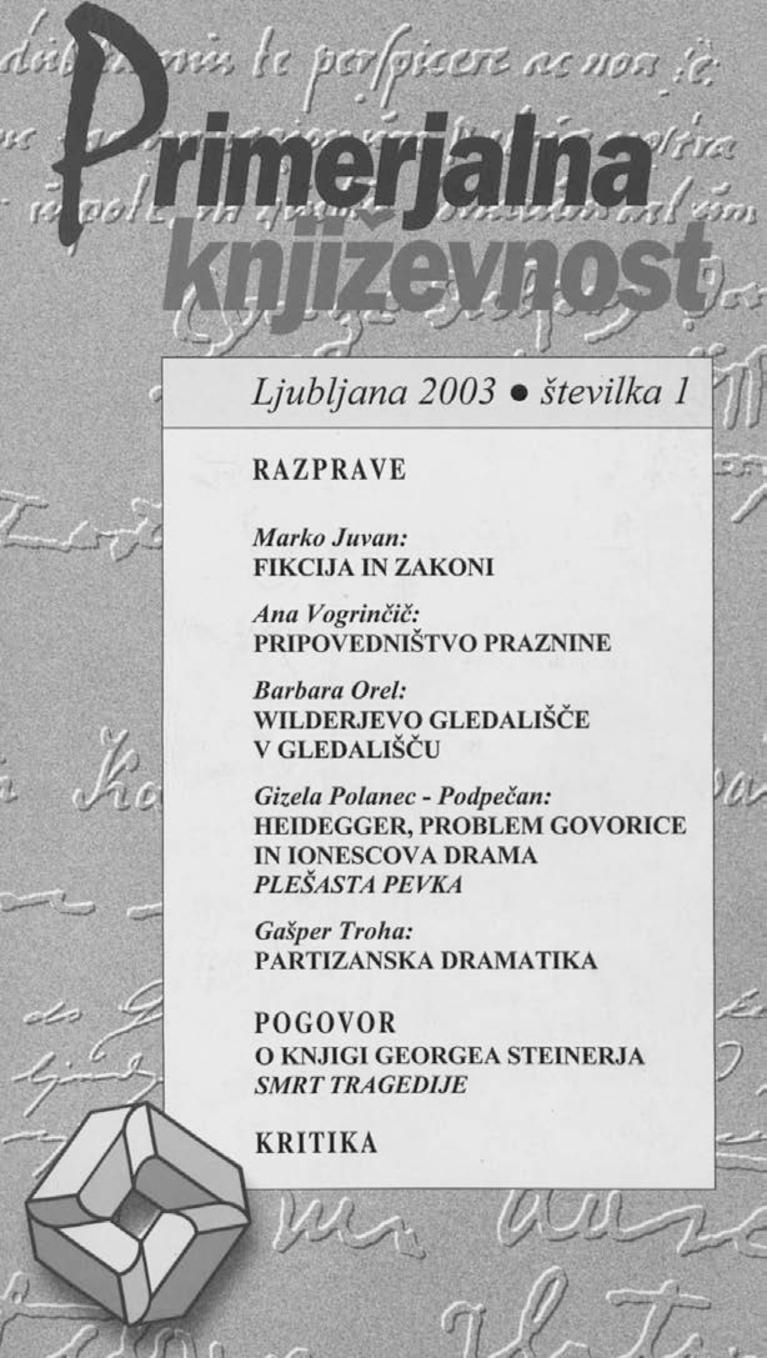Wilder’s Theatre Within Theatre. The Drama in a Dialogue with the Narrative
Keywords:
drama theory, dramatic structure, theatre within theatre, American drama, Wilder, ThorntonAbstract
In his theatre within theatre pieces (or rather plays within plays), Thornton Wilder put the drama into a dialogue with the narrative. In his plays Pullman Car Hiawatha (1931), Our Town (1938), and The Skin of Our Teeth (1942) he introduced a Director in the role of a narrator to establish the dramatic action as a play within a play, and used this form to protect the autonomy of the playwright in relation to the other creators of the theatrical performance. In the process of its staging, the dramatic piece of art is always subject to change, even to digressions from the playwright’s intentions; and this is what Wilder was hoping to avoid. His solutions were not unlike those of his contemporary Bertolt Brecht: he was led to epic theatre by precisely the opposite tendency, the tendency to autonomize the stage and return theatre to theatre. By articulating with this form of a play within a play a way of expressing his own theatrical statement, Wilder stepped out of the traditional theatrical model of reception where a performance appears as an absolute, self-contained whole, separated from its audience, as well as from the playwright himself. He introduced to absolute drama events of epic proportions (with numerous sets, panoramic landscapes, ductile units of time and a host of people, most notably in The Skin of Our Teeth), without undoing its basic stipulations (tendencies towards succinctness, finality, and direct representation). At the same time, he also deconstructed or rather multiplied the basic dramatic categories (action, space, time, character) within the Aristotelian ideal of the dramatic unities and therefore turned a closed dramatic form into an open one. Wilder’s plays are an emblematic and possibly the most obvious example of the coexistence of absolute (closed form) drama and epic (open form) drama as the two opposite, ideally typical concepts of structuring dramatic material in the history of the theatre.References
Mihail BAHTIN, 1967: Problemi poetike Dostojevskog. Beograd: Nolit. Izvirnik: Problemy tvorčestva Dostoevskogo, Leningrad, 1929.
---, 1982: Teorija romana. Ljubljana: Cankarjeva založba, Ljubljana.
Marvin CARLSON, 1992–94: Teorije gledališča I–III. Ljubljana: Knjižnica MGL, št. 115–117. Izvirnik: Theories of the Theatre, London, 1984.
Donald HABERMAN, 1968: The Plays of Thornton Wilder, A Critical Study. Middletown, Connecticut: Wesleyan University Press.
Rudolf HALBRITTER, 1975: Konzeptionsformen des modernen Angloamerikanischen Kurzdramas. Göttingen: Vandenhoeck & Ruprecht.
Volker KLOTZ, 1996: Zaprta in odprta forma v drami. Ljubljana: Knjižnica MGL, št. 121. Izvirnik: Geschlossene und offene Form im Drama, München, 1960.
Janko KOS, 1998: »Novi pogledi na tipologijo pripovedovalca.« Primerjalna književnost XXI, št. 1, str. 1–19.
Lado KRALJ, 1998: Teorija drame. Ljubljana: DZS, Literarni leksikon, št. 44.
Mirjana MIOČINOVIĆ, 1975: Radanje moderne književnosti. Drama. Beograd: Nolit.
Barbara OREL, 2000–01: Igra v igri kot tematizacija načela absolutnosti drame. Magistrsko delo. Ljubljana: AGRFT.
---, 2001: »Struktura gledališča v gledališču.« Primerjalna književnost XXIV, št. 1, str. 101–117.
Helmut PAPAJEWSKI, 1961: Thornton Wilder. Frankfurt ob Majni, Bonn: Athenäum Verlag.
Manfred PFISTER, 1977: Das Drama. Theorie und Analyse. München: Wilhelm Fink Verlag.
PLATON, 1995: Država. Ljubljana: Založba Mihelač.
Franz K. STANZEL, 1993: Typische Formen des Romans. Göttingen: Vanderhoeck & Ruprecht.
Peter SZONDI, 2000: Teorija sodobne drame. Ljubljana: Knjižnica MGL, št. 130. Izvirnik: Theorie des modernen Dramas, Frankfurt ob Majni, 1956.
Thornton WILDER, 1941: »Some Thoughts on Playwrighting.« V: Sherwood ANDERSON, Thornton WILDER, Roger SESSIONS, William LESCAZE: The Intent of the Artist. Princeton: Princeton University Press.
--- 1960: Marčeve ide. Ljubljana: Mladinska knjiga. Izvirnik: The Ides of March, New York in London, 1948.
--- 1962: Most svetega kralja Ludovika. Ljubljana: Mladinska knjiga. Izvirnik: The Bridge of San Luis Rey, New York, 1927.
--- 1965: Spalnik Hiawata. Ljubljana: tipkopis, Arhiv AGRFT. Izvirnik: Pullman Car Hiawatha, New York in New Haven, 1931.
--- 1971: Dolgo božično kosilo. Ljubljana: tipkopis, Arhiv AGRFT. Izvirnik: Long Christmas Dinner, New York in New Haven, 1931.
--- 1972: Osmi dan. Ljubljana: Mladinska knjiga. Izvirnik: The Eighth Day, New York, 1967.
--- 1977: Zaenkrat smo se izmazali. Ljubljana: tipkopis, Arhiv SGM. Izvirnik: The Skin of Our Teeth, New York in London, 1942.
--- 1992: Naše mesto. Ljubljana: tipkopis, Arhiv AGRFT. Izvirnik: Our Town, New York, 1938.


